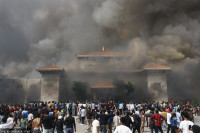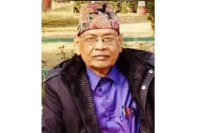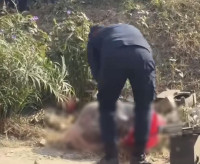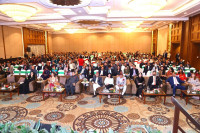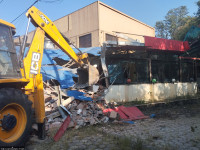Valley
Netizens help Nepal Police in aid, rescue operations
At the police headquarters in Naxal, a group of policemen at the communication department were hard at work.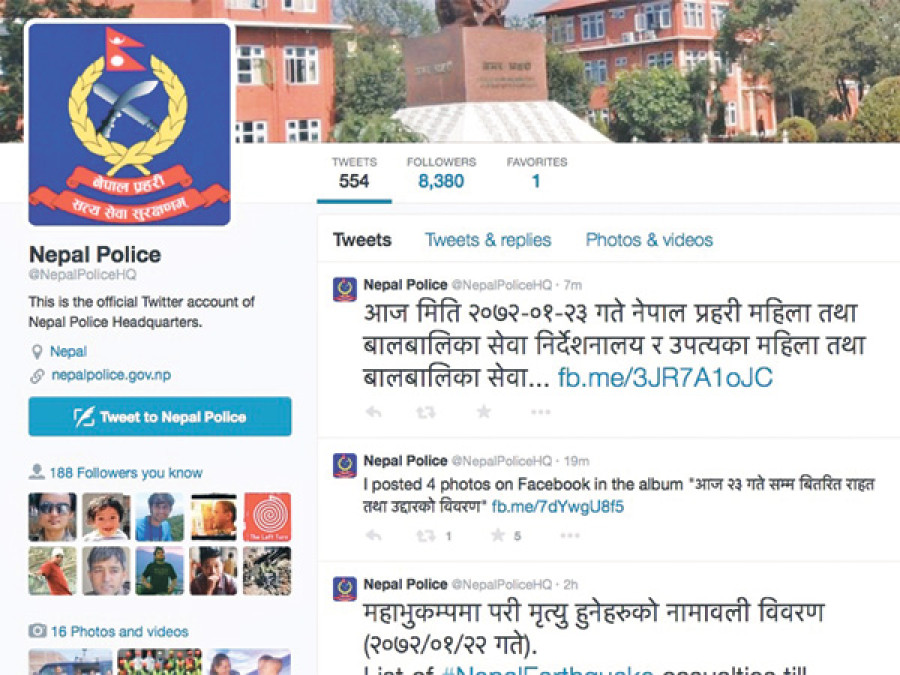
Chahana Sigdel
In the wake of the earthquake, the Nepal Police have been actively using the social media platform Twitter to coordinate rescue operations by interacting with netizens, according to Subba, who is heading the department. The communication team receives information and then dispatches it to the related unit in the field. While they don’t have the exact data to show the number of rescue operations carried out on the basis of social media information, Subba said the response and flow of information from the public—living both inside and outside the Valley—has been tremendous.
The police had opened a Facebook page two years ago, on the occasion of Police Day, but it was only after the Great Quake that Subba and his team started the Twitter page. And they have already gathered over 8,000 followers so far. “There is a convergence of both the physical and the virtual world at this point, and the way to capitalise on it could help coordinate and reach out the affected areas,” said Subba, who holds a doctorate in online media and crisis response from the University of Hawaii.
It was through Twitter that the police learned about the men spreading rumour about the ‘next massive earthquake’. Subba said that among numerous complaints they received about the rumour via Twitter and Facebook, one user’s information was particularly useful. The person mentioned that he had seen a person making such announcement through a loudspeaker in Lalitpur. The communication directorate then coordinated with the police team in Lalitpur and the culprits— who were later found to be inebriated—were arrested shortly.
News of the arrest spread across social media just like the earlier rumour. “We wanted the people to know that their input and participation paid off, which is why we responded,” said Subba.
Another instance where social media came to use was in the case of vehicles overcharging the people who were in a rush to leave the Valley in the wake of the quake. Subba pointed at the photo of a particular bus, with its number plate clearly visible. After receiving numerous responses on Facebook and Twitter, they managed to track down the driver and confiscated the collected amount. According to the communication directorate, the police have managed to collect around Rs 700,000 from overcharging vehicles from all over the country.
The role of social media has been pretty evident in the aftermath of the Great Quake. Soon after the first tremor, hashtags like #NepalQuake and #NepalQuakeRelief started trending on twitter.
There are at least 4.4 million users on Facebook from Nepal and the number of twitter users could be anywhere around one million. Subba said that it was important to use both the platforms, as the types of users could be different.
But, in the aftermath of the quake, the use of social media and various other online platforms has not just been limited to information exchange and communication purposes. Along with Facebook and Twitter, volunteers—both inside and outside Nepal—have used platforms like Google Docs, indiegogo (a crowd-funding site) and open mapping to raise money for, coordinate and share information about different rescue and relief efforts.
“People want to be a part of the relief operations. They want to contribute to the efforts,” said Subba, adding that “we now have a generation that is at par with the developed countries when it comes to using information technology, and this could be of great help even in the future.”
And it isn’t only the Nepal Police that is tweeting away. The Ministry of Home Affairs has also been using twitter, and so is the Prime Minister’s Relief Fund, which has been posting information about the money deposited in the PM’s fund, the latest death toll, names and nationalities of foreigners who have died or have gone missing and updates about the relief missions throughout the country.




 17.12°C Kathmandu
17.12°C Kathmandu
